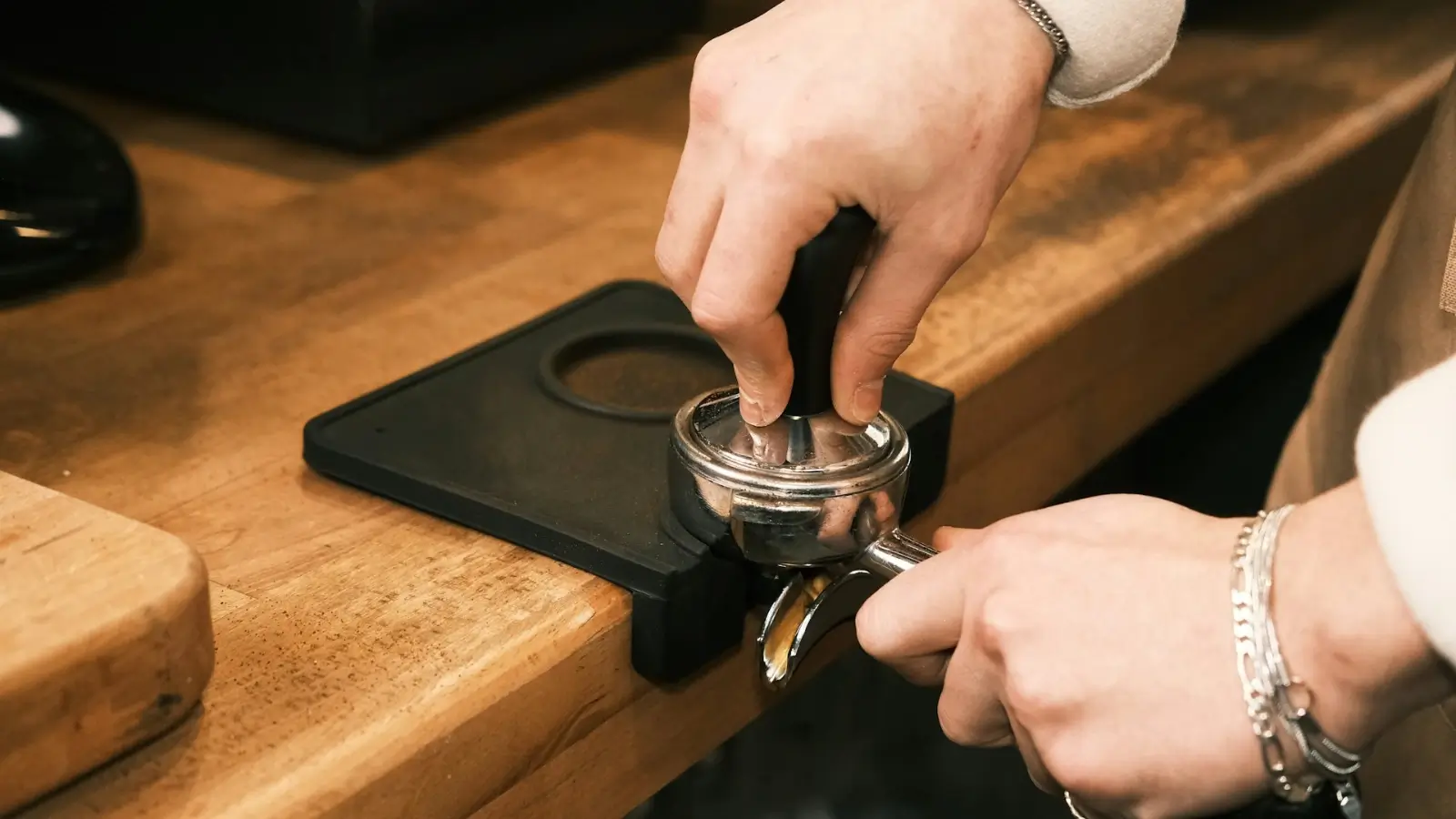


Coffee tamping is a crucial step in the process of making the perfect espresso. It involves compressing the coffee grounds into a uniform puck that can withstand the pressure of brewing. This article discusses the importance of using a coffee tamper, how it influences the flavour and quality of espresso, and what factors to consider when choosing one.
A coffee tamper is a simple yet essential tool used by baristas to ensure the coffee grounds are evenly packed in the portafilter. This is important because even distribution and pressure are necessary for optimal extraction of flavours during brewing.
The coffee tamper helps in creating a resistance within the portafilter against the water pressure exerted by the espresso machine. This resistance is crucial for extracting the full spectrum of flavours from the coffee grounds.
Proper tamping leads to an even extraction, resulting in a balanced and flavourful espresso. An uneven tamp can cause channeling, where water finds the path of least resistance through the puck, leading to an under-extracted shot. This under-extraction manifests as a weak and sour cup of coffee.
Conversely, over-tamping can restrict the flow of water too much, causing over-extraction, where the coffee tastes bitter and overly harsh. Therefore, mastering the technique of tamping is essential for consistently producing a good espresso.
A variety of coffee tampers are available in the market, differing in materials, weights, and sizes. The choice of a coffee tamper can significantly affect the tamping technique and ultimately the flavour of the espresso.
Metal tampers are preferred for their sturdiness and consistent performance. Wooden-handled tampers can provide ergonomic comfort during use. Selecting the correct tamper size is also crucial; it should match the diameter of the portafilter basket.
Tampers typically weigh between 300 to 600 grams. A heavier tamper aids in applying even pressure, whereas lighter tampers require more effort and precision. The handle also plays a role in the comfort and ease of use; ergonomic handles can reduce fatigue.
The design of the tamper's base—flat or convex—affects the distribution of pressure on the coffee grounds. Flat bases are common and provide even pressure, while convex bases can help reduce channeling by spreading the pressure outward slightly.
Achieving the right pressure when using a tamper is crucial. It is generally recommended to apply around 15 to 20 kilograms of pressure. Using a consistent, vertical press ensures that the coffee bed is level and evenly compacted.
After applying the initial pressure, many baristas recommend giving the tamper a slight twist to polish the surface of the puck. This 'polishing' can help in minimizing the potential for channeling and provides a smooth surface for water to pass through.
Practising consistency when using a coffee tamper can greatly affect the outcome of the espresso. Developing a routine helps ensure that each espresso shot pulled is similar, thus delivering a consistent taste profile.
Baristas often weigh their coffee doses and time their shots to maintain uniformity. Using a calibrated tamper can also help achieve consistent pressure with each use.
Regular cleaning of the coffee tamper and other tools involved in espresso making is crucial for maintaining the taste and hygiene of the brew. Residue coffee oils can affect the tamper over time, impacting its performance and the flavour of the espresso.
A quick wipe with a damp cloth after each use, along with periodic deep cleaning, can help keep the tamper in optimal condition. Some tampers also require periodic polish to maintain their sheen and ergonomic properties.
The use of a coffee tamper is more than a procedural step in making espresso; it is an art that requires practice and attention to detail. Whether one is an experienced barista or a home enthusiast, understanding and mastering tamping can elevate the quality of espresso.
For those looking to purchase a high-quality coffee tamper, consider options available from various suppliers. One such recommendation is the collection of coffee tamper offerings from Hypergrind Coffee.
By selecting the right tamper and refining one's technique, users can enjoy a consistently excellent cup of espresso, making the coffee experience both satisfying and flavourful.